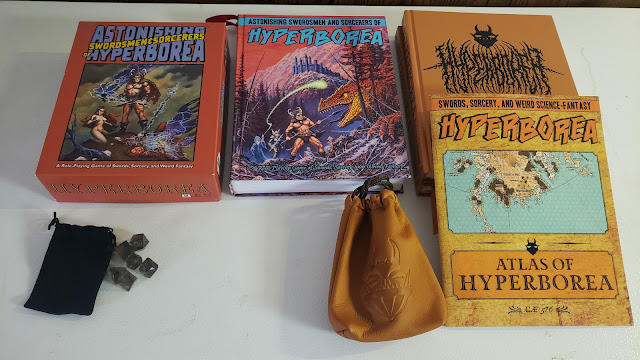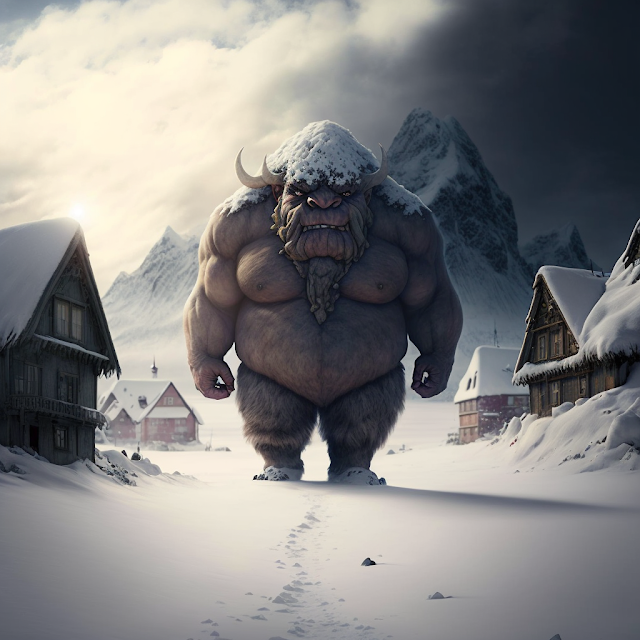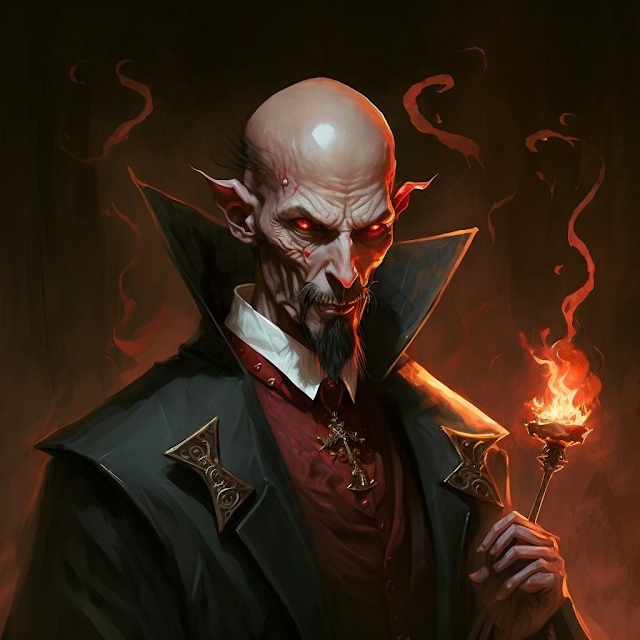We are almost at the Winter Solstice, and Christmas is less than a week away.
My thoughts this month have been coming back to D&D 5e and what the future for that might be. At least for the next year or so, 5e will be largely the same, so I will be getting some 5e content out here to enjoy it. I also just finished reading the Finnish epic poem, the Kalevala. Really one of the foundational stories of D&D to be honest. You can see where so much of D&D came from; Gygax's interpretation of this tale, and Tolkien's use of it in the formation of Middle Earth and his Legendarium.
So my thoughts on all of these are rummaging around and I was thinking I need more types of cold creatures, bards, and more magic. Some of that I showed off last week with my Jötunn Troll.
So here is some 5e content from the frozen lands of the far North.
Elf, Álfar Skald
Medium humanoid (elf), Chaotic Neutral
Armor Class 13 (Hide armor)
Hit Points 17 (3d8 +3)
Speed 30 ft
STR 12 (+1)
DEX 13 (+1)
CON 13 (+1)
INT 14 (+2)
WIS 11 (+0)
CHA 12 (+1)
Saving Throws Con +3, Cha +5
Skills Performance +5, Persuasion +5, Perception +3, Survival +3
Damage Resistances Cold
Condition Immunities Blinded
Senses darkvision 120 ft., passive perception 13
Languages Common, Elvish, Giant
Fey Ancestry. The Álfar has advantage on saving throws against being charmed and can't be put to sleep.
Innate Spellcasting. The Álfar’s innate spellcasting ability is Charisma (spell save DC 13). The Álfar can innately cast the following spells, requiring no material components:
At will: minor illusion
1/day each: animal friendship, healing word
Fleet of foot. Like all elves, the Álfar are fleet of foot and can travel over snow and ice with no restrictions.They are immune to difficult terrain caused by ice and snow.
Protected eyes. Álfar have a protective membrane over their eyes. They do not suffer disadvantage from blizzards or poor weather.
Actions
Shortsword. Melee Weapon Attack: +3 to hit, reach 5ft. one target. Hit: 6 (1d6 +3) piercing damage.
Sling. Ranged Weapon Attack. +3 to hit, range 30/120 ft., one target, Hit: 5 (1d4 +3) bludgeoning damage.
Description
Álfar are the elves of the coldest reaches. Also known as “snow elves” they are tall (6’ to 6½’), with long straight white or light blond hair. Some, though, have long black hair. Their skin is pale and their eyes are so pale that they appear nearly white or light bluish-white. This is due to a protective membrane over the eye that allows them to see even in the coldest of temperatures or the blowing of snow.
Álfar are typically encountered in roaming bands of hunters or in warmer climes, herders of goats and sheep. They will typically be armed with a shortsword and sling with up to 20 sling stones handy.
Like all elves, they produce beautiful works of art, though they lack the raw materials of their forest-born brothers and sisters. They are a nomadic species, often following large game in their frozen territories. For this reason, their chief artistic expressions are saga songs. These tales of ancient times, gods, and heroes can last from a few minutes to several days to perform, often with other singers (Skalds) joining in and taking over for others. Álfar skalds are revered by their communities.
Álfar bards are known as skalds. Their role in the Álfar community is to memorize the saga songs of these nomadic elves, some which take days to completely sing. Skalds advance as bards.














